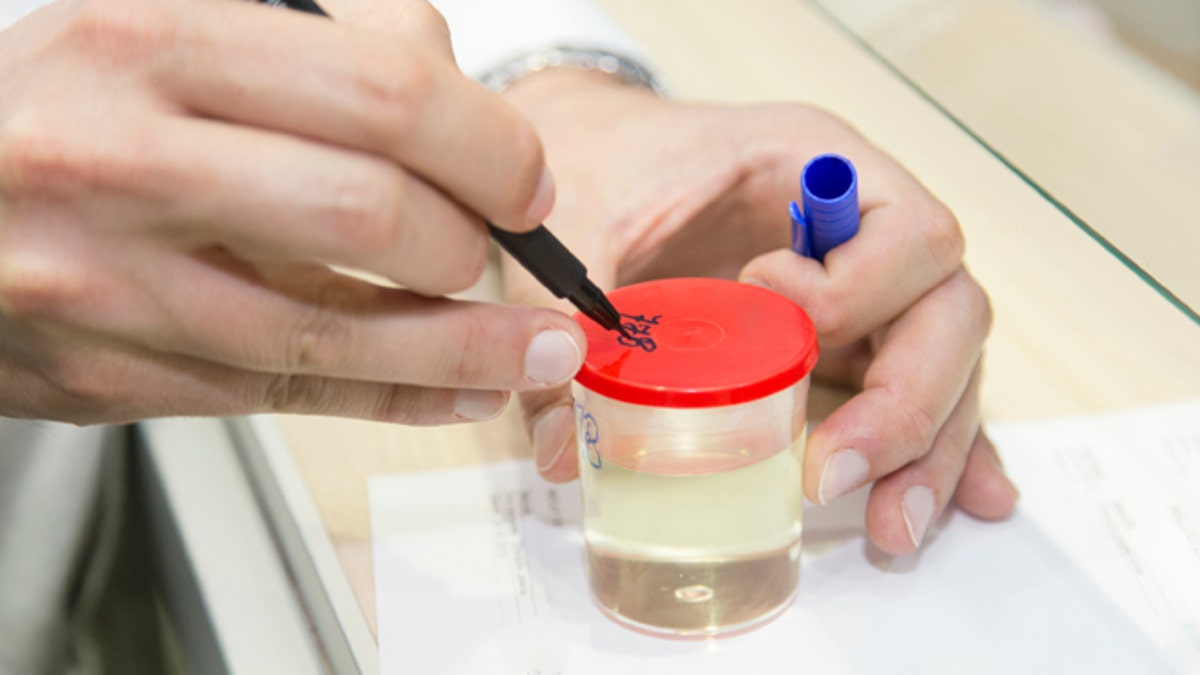
(iStock Photo)
Detecting diseases such as cancer could one day be done with a urine test, if a new technique demonstrated in two new studies proves to be safe and effective in people.
Detecting diseases such as cancer could one day be done with a urine test, if a new technique demonstrated in two new studies proves to be safe and effective in people.
The new method works by using genetically engineered bacteria to detect markers of disease in the body, researchers described in two new studies.
With current methods, diagnosing certain diseases can be time-consuming and difficult. For example, some cancers can only be confirmed with invasive biopsies, and CT scans can only see tumors once they've grown relatively large, on the order of a half-inch. Other disorders can be hard to pin down because the markers they leave in the blood or urine are at such low concentrations that they are hard to detect.
Now, using engineered bacteria similar to the type in yogurt, researchers say they have found ways to see cancers sooner and seek specific chemicals in bodily fluids, making testing easier on patients as well as providing more accurate tests.
In one of the two new studies, researchers at MIT and the University of California, San Diego used altered Escherichia coli bacteria to colonize tumors in mice that spread to the liver from other organs (known as metastasizing tumors). The strain of E. coli they used was a harmless one that is often used to promote gastrointestinal health, and was fed to the mice orally.
Once inside the mice, the bacteria fed on chemicals produced by the "necrotic core" of dead cancer cells at the center of the tumor. "In the tumors, in the necrotic core, [the bacteria] get energy from the dying cancer cells," Tal Danino, an MIT postdoctoral researcher and lead author of the paper, told Live Science. [5 Crazy Technologies That Are Revolutionizing Biotech]
At the same time, the researchers injected the mice with a mix made of the sugar galactose linked to a protein called luciferin, which is the same molecule that glows when fireflies light up.
The E. coli were engineered so that, as they fed off the tumor cells, the bacteria produced an enzyme that split the galactose from the luciferin. The luciferin was filtered out of the blood by the kidneys, and ended up in the animals' urine, turning the urine of mice with metastasizing liver tumors red.
The bacteria could be programmed to pick up on any chemical, not just the stuff given off by dead tumor cells, Danino said. The work is still in its early stages, and it's not clear whether the system would work in people. But if it does work, researchers could use it to detect almost any altered biological state in the body, though it's likely that cancers will be the first targets, Danino said.
The second research team, at the French Institute of Health and Medical Research (INSERM), used another strain of E. coli, with differently engineered genes, to detect glucose and other markers in urine to show that a patient had diabetes. The researchers gave the E. coli a gene that, in the presence of sugar and other markers of diabetes, produces a molecule that alters the color of the urine. They experimented with samples of human urine, from both healthy people and people with diabetes.
But in this case, the researchers also sought a way to solve the problem of detecting the very small concentrations of the markers that doctors are often seeking. They engineered the E. coli to not only make chemicals that change the urine's color, but also make more of that chemical, so that the color changes are visible.
This is similar to what transistors in radios do — amplify signals so that people can hear them — but in this case, it's a biological signal, the researchers said. "We show a proof of concept," said Jérôme Bonnet, the researcher at INSERM who led the study. "If we use amplification ... we can bring these biosensors closer to clinical requirements."
What makes both techniques powerful is the ability to detect tiny amounts of the chemicals the bacteria are seeking, the researchers said. Danino said one issue with cancer that spreads to the liver is that it's hard to see the tumors until they are about a half-inch across, and by that time, the cancer is much harder to treat.
The new findings show that bacteria can get into the body and colonize much smaller tumors only millimeters in diameter, thus offering the chance to detect potentially deadly cancers much sooner, he said.
Bonnet said the bacterial urine test for diabetes that the researchers created in the new study is unlikely to replace the diagnostic tools available now. However, there are other markers that researchers might want to look for, and bacteria can often do it better than conventional methods. "We're relying on detection systems that rely on natural systems," he said.
The next steps for the MIT team will be to try to detect other kinds of cancer, and work to show that the bacteria they made are safe and effective to use in people.
The French group is planning to try to look for other biomarkers of diseases, and see what can be most useful in clinical settings.
Both studies appear today (May 27) in the journal Science Translational Medicine.
- Top 10 Cancer-Fighting Foods
- 10 Technologies That Will Transform Your Life
- 7 Cool Uses of 3D Printing in Medicine
Copyright 2015 LiveScience, a Purch company. All rights reserved. This material may not be published, broadcast, rewritten or redistributed.
